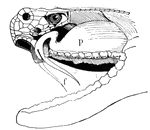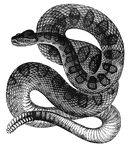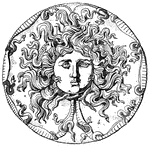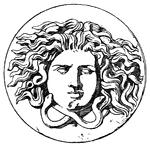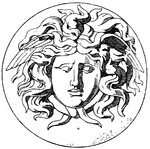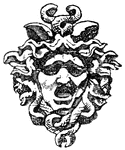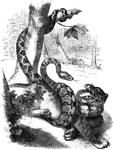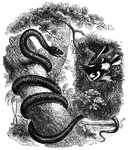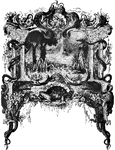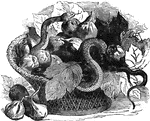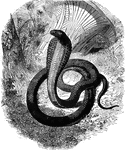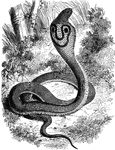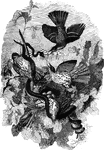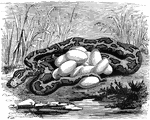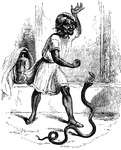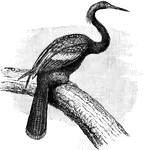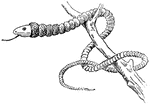Boa constrictor
This gigantic snake kills its prey by constricting around it, squeezing it to death, then swallowing…
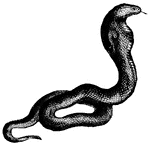
Cobra
When irritated, the neck of a cobra swells at the same time it raises the front part of its body vertically,…

Puff-adder
These venomous snakes have triangular heads and short stocky bodies. They are a highly poisonous snake.
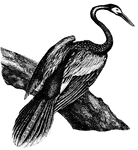
Anhinga
The head of the anhinga is slender and cylindrical, on a slim and excessively long neck, which makes…
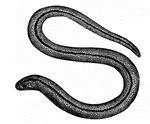
Blind Worm
The blind worm is a good example of a snakelike lizard. It is harmless, and looks like a snake.
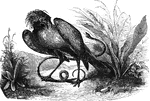
Secretary Vulture
G. serpentarius, known as the serpent vulture because it feeds on snakes. It has a distinctive…
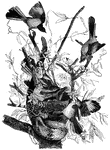
Mockingbirds Attacking a Rattlesnake
A flock of mocking-birds attacking a rattlesnake in a tree, which was threatening a nest.
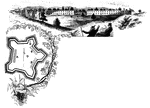
Western Line of Barracks
Western line of barracks. There were four large buildings used for barracks within the fort, the walls…

Natatores
A group of birds of the order natatores, whose webbed feet are well adapted for propelling them on and…
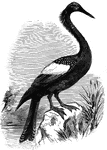
Anhinga
Also known as the snake-bird, the anhinga inhabits the freshwater areas of the South Atlantic States;…
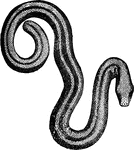
Brown amphisbaena
Ranging from eighteen to twenty-four inches long, the brown amphisbaena feeds on worms and insects,…
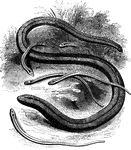
Slow-worm
Common in Europe, the slow-worm resembles a snake, but its internal structure is that of lizards.

Glass-snake
Found in the woods of the Southern States, the glass-snake has the head of a lizard, but the body resembles…

Cross section of a viper head
Section of the head of a serpent. a, poison fangs; b, poison glands; c, conductor for the poison; d,…
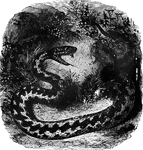
Common European viper
The common European viper feeds on a small quadrupeds and reptiles. Its bite is venemous, but not usually…
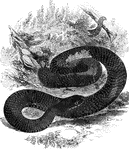
Black viper
Found in Europe from Sweden to the Medittanean Sea, the black viper is also the only venemous reptile…

Bicolored sea-snake
The bicolored sea-snake is found in the waters of the Pacific Ocean, especially in the vicinity of Tahiti.

Golden Tree Snake
"Four to five feet long; color yellowishgray, cleaning with a pale golden hue, and dotted with whitish…
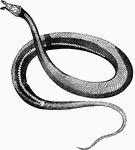
Herpeton tentaculatus
"The muzzle of H. tentaculatus is furnished with two soft prominences, covered with scales, the use…
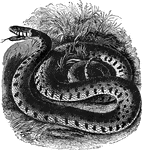
Common ring-snake
"The common snake of Europe... frequents woods, bogs, and other sheltered situations in the vicinity…

Python
"Pythons are the largest known serpents, which are found only in India and the islands of the Indian…
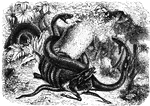
Boa constrictor
"The boa constrictor grows to great size, and greatly resembles the python in its habits." — Goodrich,…

Red Bandfish
"One to two feet long, color orange-red; moving in the waters it appears like a red-ribbon. This, as…
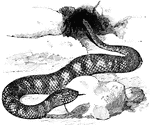
Acanthophis
"A genus of venomous serpents, they are of small size, live on dry land, and feed upon frogs, lizards,…

Gopher
"Gopher is a name given by the early French settlers in the United States to various animals which honeycomb…
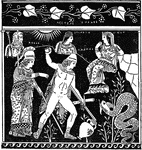
Cadmus and the Dragon
"Cadmus and the Dragon. (From a vase-painting at Naples.)" — The Delphian Society, 1913

Rattlesnake
"Rattlesnake is the English name for any species of the American genus Crotalus, the tail of which is…
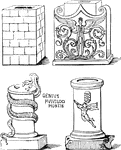
Altars
"Altars were either square or round. Specimens of both kinds are here given from ancient sculptures."…
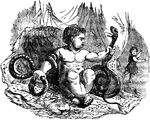
Young Hercules
"Hercules, a Theban prince, was another of the descendants of Pelops. The numerous and extraordinary…


